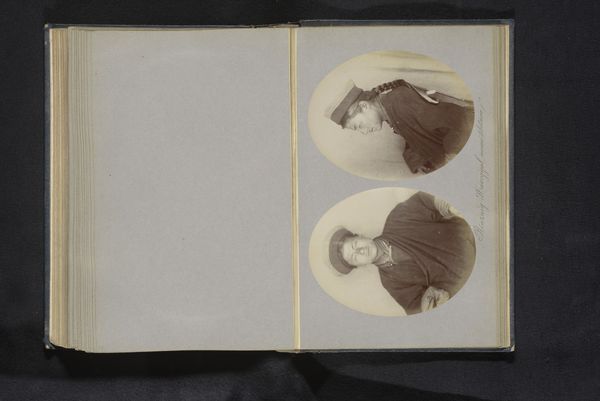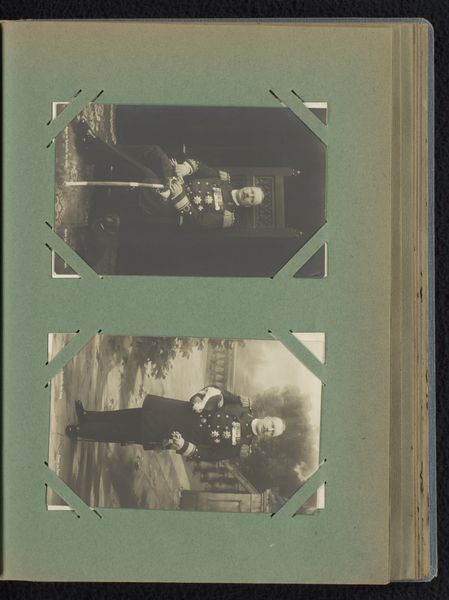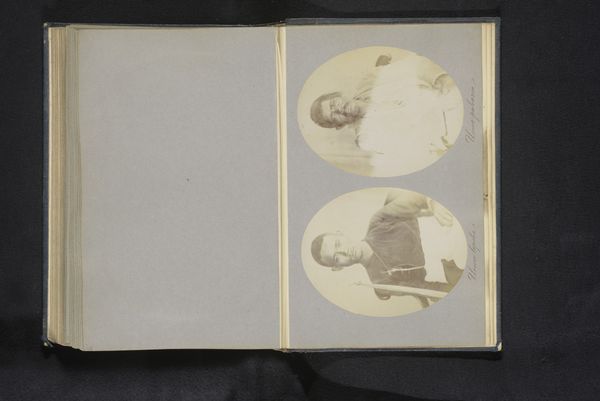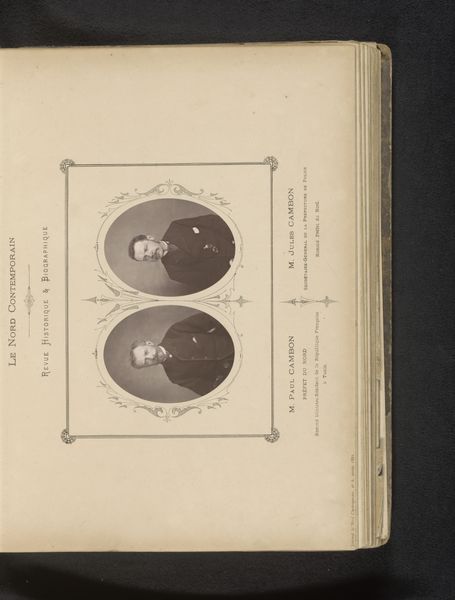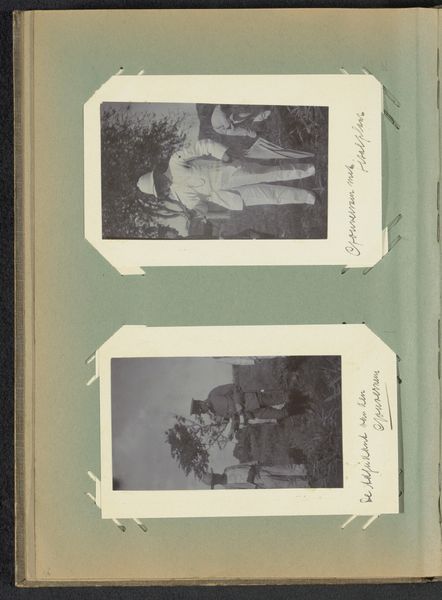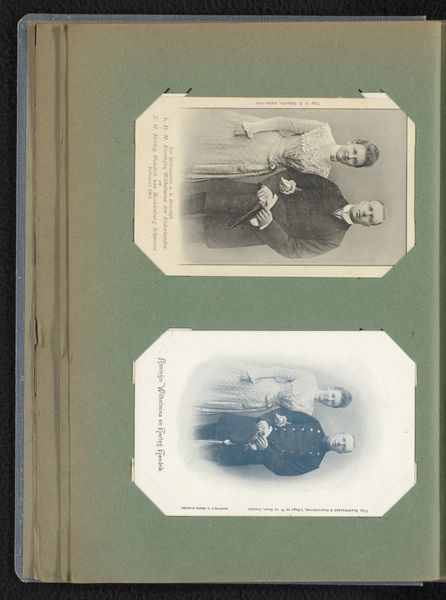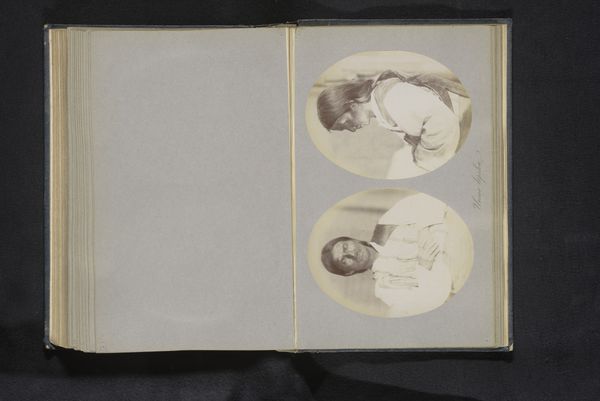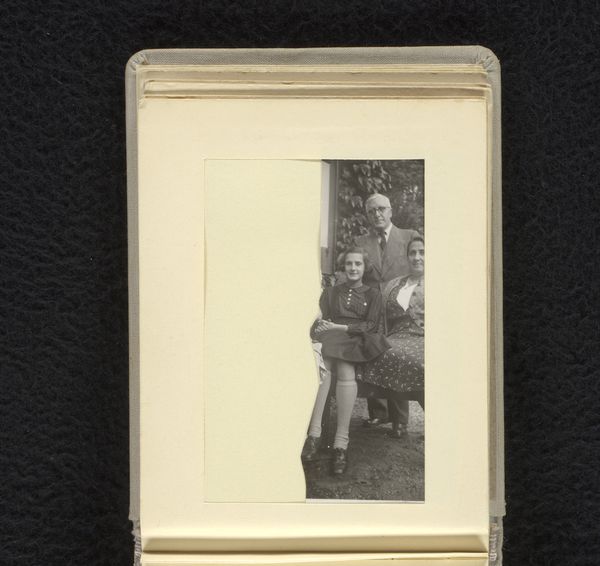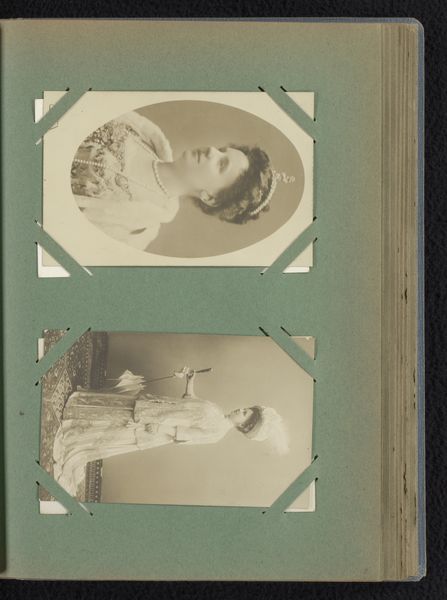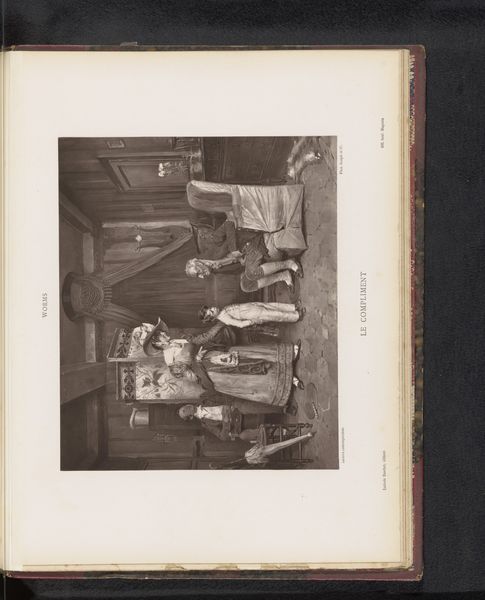
photography, gelatin-silver-print
#
portrait
#
pencil sketch
#
photography
#
gelatin-silver-print
#
islamic-art
#
history-painting
Dimensions: height 270 mm, width 352 mm
Copyright: Rijks Museum: Open Domain
Curator: Here we have "The Khedives," a gelatin-silver print dating back to around 1881. Editor: Immediately striking! The muted tones, the oval vignettes…it evokes such a strong sense of late nineteenth-century formality. There's a tactile quality despite the photograph, almost like aged paper or a very fine fabric. Curator: Indeed. It's fascinating how this photographic technique elevates portraiture, especially when considering the social and political contexts. The image depicts Khedive Ismail at the bottom and his son Tewfik, rulers of Egypt during a period of significant western influence and ultimately, British occupation. Think about the power dynamics embedded in this representation, created during a tumultuous time for Egyptian sovereignty. Editor: Right, and looking closer, notice the detail captured in their clothing. The crisp lines of Ismail's suit contrast with the more elaborate, almost textile-like rendering of Tewfik's embroidered attire. This speaks volumes about how class and rulership are being materially constructed and presented to a western gaze, doesn’t it? Curator: Precisely! This print was made during a period of burgeoning photographic technology, distributed widely, shaping and circulating imagery related to empire. "The Khedives" offers not just a glimpse into individual likeness, but also how Egypt was attempting to position itself on the global stage during a complicated power dynamic with the west. Editor: Thinking about the production… the process itself—the silver halides suspended in gelatin, exposed to light, then meticulously developed—becomes another layer of materiality that encodes the story of representation and circulation of power. This wasn’t simply snapped, but intentionally constructed. Curator: It prompts us to reflect upon photography’s complex relationship with colonial representation, shaping and disseminating powerful cultural and political narratives that still resonate today. Editor: Yes. Examining the photographic materiality reveals more than just portraiture; it shows how technology shaped empires by creating powerful visuals through accessible reproduction that reify power dynamics and social stratification. Curator: It certainly does shift our perspective and adds to a more nuanced understanding of late nineteenth-century Egypt. Editor: Agreed. The texture of empire. Fascinating.
Comments
No comments
Be the first to comment and join the conversation on the ultimate creative platform.
